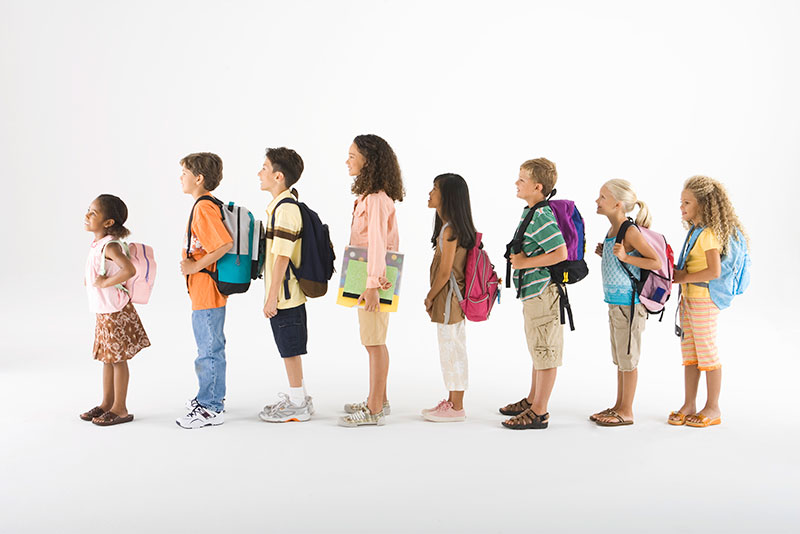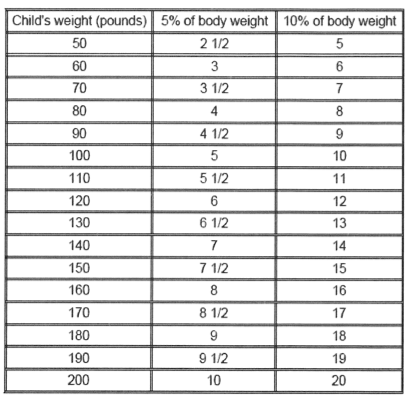Written by Dr. Daniel Shaye
—
[dropcap]While your child may not weigh 300 pounds, from the perspective of his or her lower back, they do with every step. When you walk or run, the force that runs through each disc in the lower back is easily three times your body weight. That’s a lot of force. Let’s examine the risks of improper backpack use and learn how to lighten the load. [/dropcap]Identifying problems
Have you picked up a backpack lately? It’s not uncommon to find one weighing 20 to 30-plus pounds. That’s too much weight for most people, especially youths with growing spines and maturing musculoskeletal systems. Bad posture starts young, and as the saying goes, “As the twig is bent, so the tree is inclined.”
While heavy backpacks can be blamed for a child’s lower back pain, they can also cause knee, hip, neck, shoulder and mid-back pain, and headaches. Backpacks are not to blame for scoliosis (an abnormal curvature and twisting of the spine), but they can worsen or possibly even accelerate it—especially if the backpack is constantly slung over the same shoulder. All of the above conditions can be alleviated in some cases through proper backpack use (although bend the “twig” for too long, and your child could face long-lasting problems).
Do you need to see a specialist to spot the warning signs of backpack misuse? Probably not. Here are a few indicators of misuse:
- POSTURE. Simply look at your child and how they stand. Does one hip sit higher than the other? One shoulder? Does one or both knees turn inward?
- FOOTWEAR. Look at their shoes, especially if your child has been wearing them for some time. Do the shoes show uneven heel wear? Take those same shoes and put them on a level surface. Is one or both shoes collapsing inward, or outward?
- VERBAL CUES. Take a moment to listen to your child. Has he been complaining of headaches, back, knee or other pain? Has she been altering her activities? Kids are pretty resilient, but if their aches and pains are altering their activities, then something’s wrong—especially if they’re not engaging in treasured play or recreational activities.
Correcting Course
Specialists can help correct postural faults, but let’s catch the problem now. Tight shoulder muscles and neck stress can and often do result in headaches. Instead of offering a pill, let’s remedy the cause. Yes, a good chiropractor, physical therapist or massage therapist can help with muscle tension headaches or headaches emanating from the neck, but lightening your child’s backpack will help eliminate the pain at its the source.
An ally in fighting the ravages of over-heavy backpacks is your bathroom scale. Backpacks should weigh no more than 10 percent of your child’s body weight, and some experts suggest capping backpack weight at 5 percent (see chart). Regardless of its weight, a backpack should rest comfortably up against the body without any jutting or hard objects digging into the back. It should distribute weight to the hips while minimizing stress on the shoulders. Of course, any hi-tech backpack loses its advantages if your child throws that backpack over a single shoulder. Cool and healthy aren’t always one-and-the-same.
Teach your child to lift their backpacks from the ground properly. Somewhere along the way we become less flexible and develop bad habits. Lifting or squatting requires some ankle flexibility and functional body alignment. Have your child lift his backpack by squatting and using the butt and core muscles, not bending at the lower back. With 80 percent of adults experiencing disabling lower back pain on at least one occasion, stack the deck in your kids’ favor—and do so early on.
Having healthy shock-absorbers (intervertebral discs) between your spinal bones is critical to handling the physical stress of lugging around a backpack. Water is darn-near free, and it’s very important to spinal health. Be sure your kids drink plenty of water (not soda, not coffee). Young spinal discs are up to 92 percent water. By helping them hydrate properly you’ll be stacking the deck in favor of a healthier back, better athletic performance (if you’re so inclined) and fewer headaches. Here’s to a happy, healthy, and safe school year, for all.


